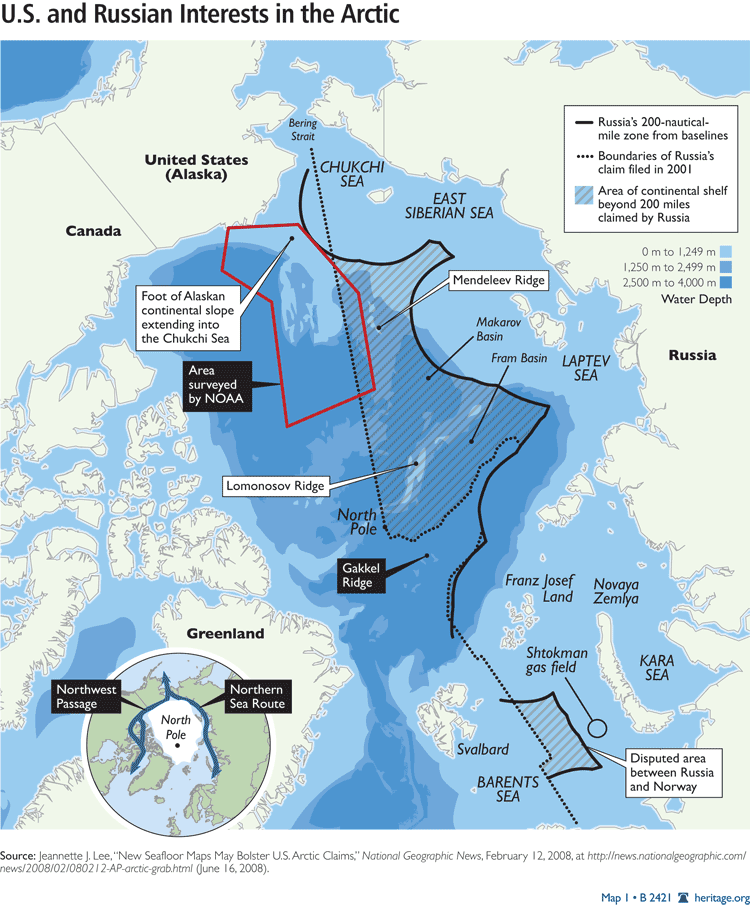US
Navy Deploys Drones Under Arctic Ice, Competes with Russia for
Waterways
The
US Navy has started to deploy underwater drones beneath the arctic
ice both to study the deterioration of the ice sheet due to climate
change and to help plan for anticipated increases in traffic as
previously frozen waterways open up.
10
March, 2015
In
terms of environmental monitoring, the drones will measure
salinity and temperature, for instance, which will help
scientists create more accurate models to predict future rates
of melting.
But
the plans are also meant to address the "security
implications" of the opening up of the Arctic waters,
according to the Navy's Arctic
Roadmap,
updated in 2014 to adapt to changing Arctic
conditions. Part of that plan, which spans 2014-2030, is
to increase the number of ships in the region, Martin
Jeffries, science advisor to the Office of Naval Research,
or ONR, told Military.com.
"Due
to the significant retreat of sea ice, previously
unreachable areas have started to open for maritime use
several weeks each year. The predicted rise in oil and gas
development, fishing, tourism, and mineral mining could alter the
Region’s strategic importance as Arctic and non-Arctic nations
make investments," the Roadmap says.
The
two aspects of the are connected, as the rate of melting
will determine how many more ships are deployed in the region
and how quickly. The drones will focus specifically on what is
known as the marginalized zone — where the solid ice
shelf meets the ocean — the frontier of the Arctic ice.
“What
we’ve been seeing in recent years is a much greater retreat
of the sea ice cover in the summer time such that in the
last eight years, we’ve seen the eight lowest minimum ice extent
values in the arctic in the satellite record going back
to 1979,” said Jeffries.
Drone
Designers? Talk to DARPA.
One
underwater drone currently in use has been the Seaglider —
a 110-pound, 2.8-meter submersible whose audio sensors can reach a
depth of 1,000 meters where they record their precise location
with audio "pings" and help build an accurate picture
of temperature and salinity changes.
“We
can deploy robotic technologies for sustained autonomous
observing over many months — to observe the ocean,
the ice and the atmosphere. Doing this with high navigation
accuracy makes the scientific value of the data much greater,”
said Jeffries. “By the end of the summer in 2014, the
science team had deployed over 100 robotic platforms in the
ice and the ocean.”
But
the US Defense Department is hoping for much more advanced drone
technology in the future and the US Defense Advanced
Research Projects Agency, or DARPA recently announced an open
call to developers for unmanned
vehicles with sensors to monitor the area and alert
authorities to potential problems in the region.
DARPA
has up to $4 million dollars ready for those who might
produce unmanned vehicles that meet its needs. The agency wants
"environmentally friendly" vehicles that both fly and swim
and which can go up to 30 days without recharging
since access to the electrical grid is restricted in the
Arctic.
Competition
Heats Up as Ice Melts
The
push into the Arctic is also a reaction against Russian
moves to secure their interests in the Arctic and the
Russian Navy's similar plans to increase their own presence
in the region. Not only will the thawing ice shelf open
up shorter, lucrative shipping routes, but also oil and gas
reserves of great, though not precisely known, value.
Russia’s
revised military doctrine, signed by President Vladimir Putin
in December 2014, for the first time ever named the
protection of national interests in the Arctic among the
main priorities for its armed forces in times of peace.
Part of that has been to resume a permanent military
presence and Russia has reopened a military base on the
Novosibirsk Islands.
Though
the extent of the natural resources in the Arctic is
currently unclear, oil and gas explorers are hoping the new thawing
frontier will be a boon to their industries. Estimates are that
the Arctic could hold as much as 13% of the world's
undiscovered but recoverable oil, with that figure rising
to 30% for gas.
There
have already been disputes about how far a country's influence
extends among the five Arctic nations — Canada, Norway,
Russia, Denmark through Greenland, and the United States
through Alaska. Under international law those countries'
Exclusive Economic Zones are limited to 200 nautical miles
off their shores.
Russia
has claimed the ocean floor as an extension of the Siberian
continental shelf all the way to the North Pole, where an
underwater expedition symbolically dropped a Russian flag on the
sea bed in 2007.








No comments:
Post a Comment
Note: only a member of this blog may post a comment.